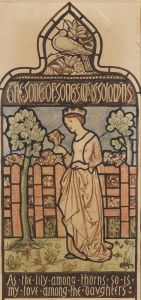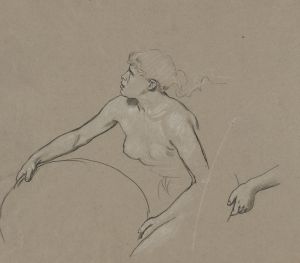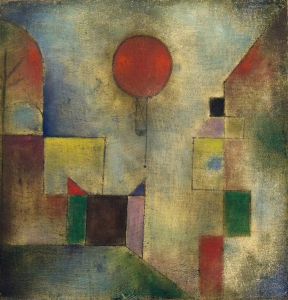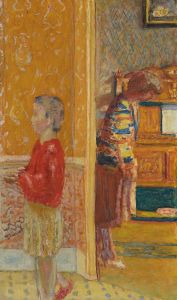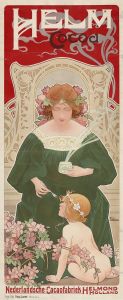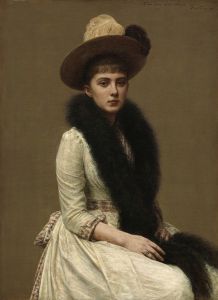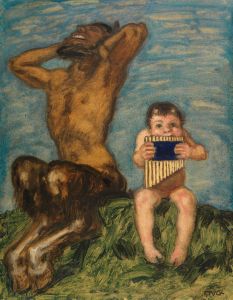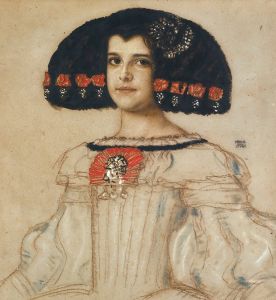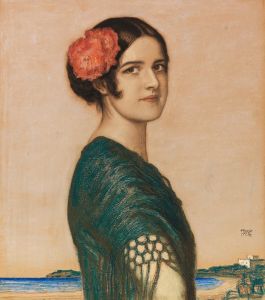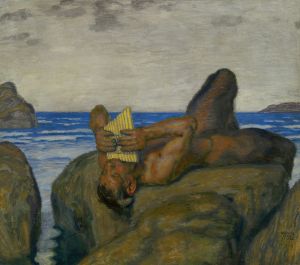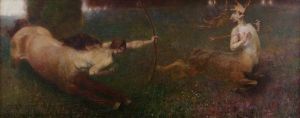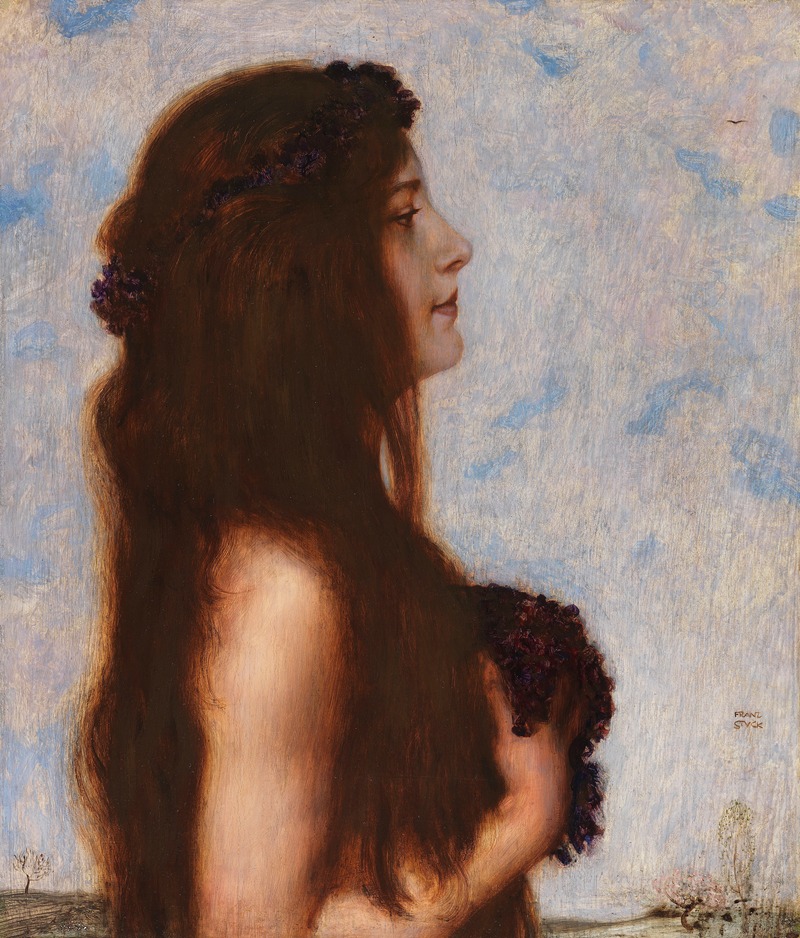
Frühling
A hand-painted replica of Franz von Stuck’s masterpiece Frühling, meticulously crafted by professional artists to capture the true essence of the original. Each piece is created with museum-quality canvas and rare mineral pigments, carefully painted by experienced artists with delicate brushstrokes and rich, layered colors to perfectly recreate the texture of the original artwork. Unlike machine-printed reproductions, this hand-painted version brings the painting to life, infused with the artist’s emotions and skill in every stroke. Whether for personal collection or home decoration, it instantly elevates the artistic atmosphere of any space.
Frühling, translated as "Spring," is a painting by the German artist Franz von Stuck, a prominent figure in the Symbolist movement. Created in 1902, this work exemplifies Stuck's fascination with mythological themes and his skill in combining classical motifs with a modern sensibility. Stuck, who was also a sculptor, architect, and designer, was a founding member of the Munich Secession, an art movement that sought to break away from traditional academic art and embrace new artistic expressions.
Franz von Stuck was born on February 23, 1863, in Tettenweis, Bavaria, and he became one of the most influential artists in Germany during the late 19th and early 20th centuries. His work often explored themes of mythology, allegory, and the human condition, characterized by a distinctive style that merged realism with symbolic elements. Stuck's art was known for its dramatic use of light and shadow, as well as its sensual and often provocative subject matter.
Frühling is a testament to Stuck's ability to capture the essence of mythological subjects while infusing them with a sense of modernity. The painting depicts a scene that embodies the spirit of spring, a time of renewal and rebirth. While specific details about the composition of Frühling are not extensively documented, Stuck's work typically features figures from mythology or allegory, often portrayed in a lush, dreamlike setting.
Stuck's use of color and light in Frühling likely reflects his mastery of creating mood and atmosphere. His paintings often exhibit a rich palette, with a focus on the interplay between light and shadow to enhance the emotional impact of the scene. This technique is evident in many of his works, where he skillfully manipulates light to draw attention to specific elements or to create a sense of depth and dimension.
As a member of the Munich Secession, Stuck was part of a movement that sought to challenge the conventions of academic art and promote innovative approaches to artistic expression. The Secessionists were known for their embrace of modernism and their rejection of the rigid rules that had dominated the art world for centuries. Stuck's work, including Frühling, reflects this spirit of innovation and his desire to explore new artistic frontiers.
Franz von Stuck's influence extended beyond his paintings; he was also a respected teacher at the Academy of Fine Arts in Munich, where he mentored a generation of artists, including the renowned painter Wassily Kandinsky. Stuck's legacy is evident in the continued appreciation of his work, which remains a significant part of the study of Symbolism and early modern art.
Frühling, like many of Stuck's works, captures the viewer's imagination with its blend of mythological themes and modern artistic techniques. While specific details about the painting's current location or exhibition history may not be widely available, its significance lies in its representation of Stuck's artistic vision and his contribution to the Symbolist movement. Through works like Frühling, Franz von Stuck continues to be celebrated as a pivotal figure in the transition from 19th-century academic art to the more expressive and experimental art of the 20th century.





